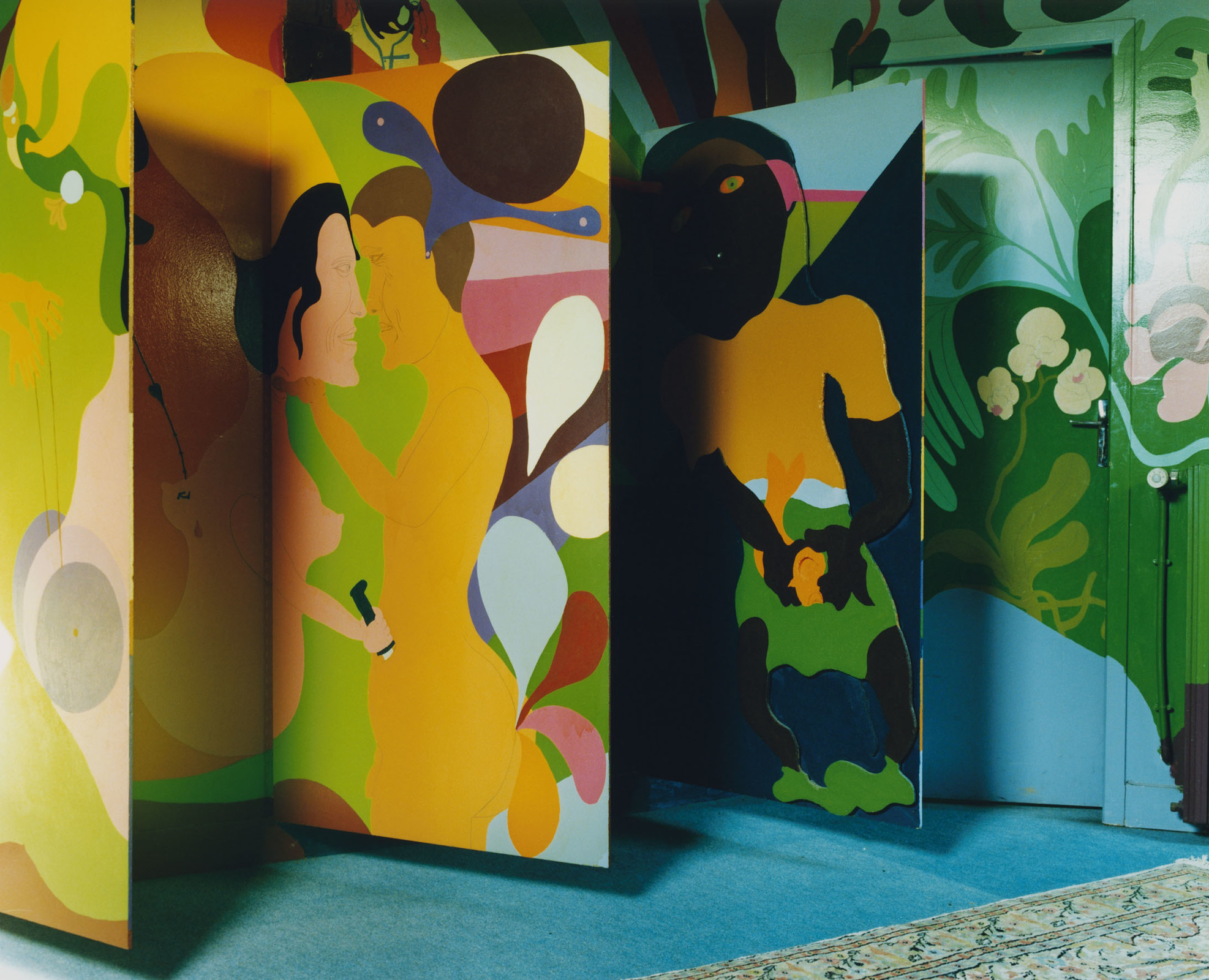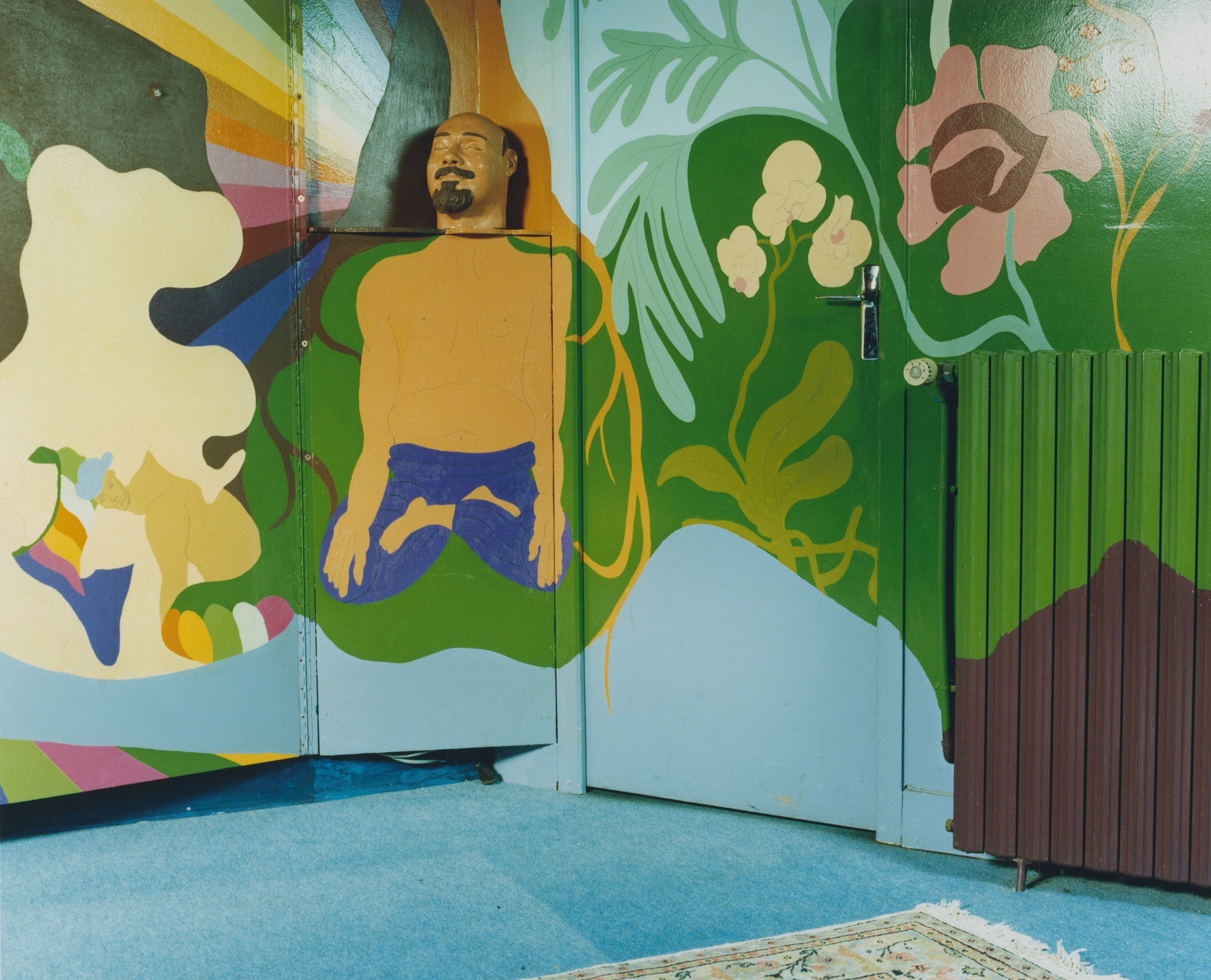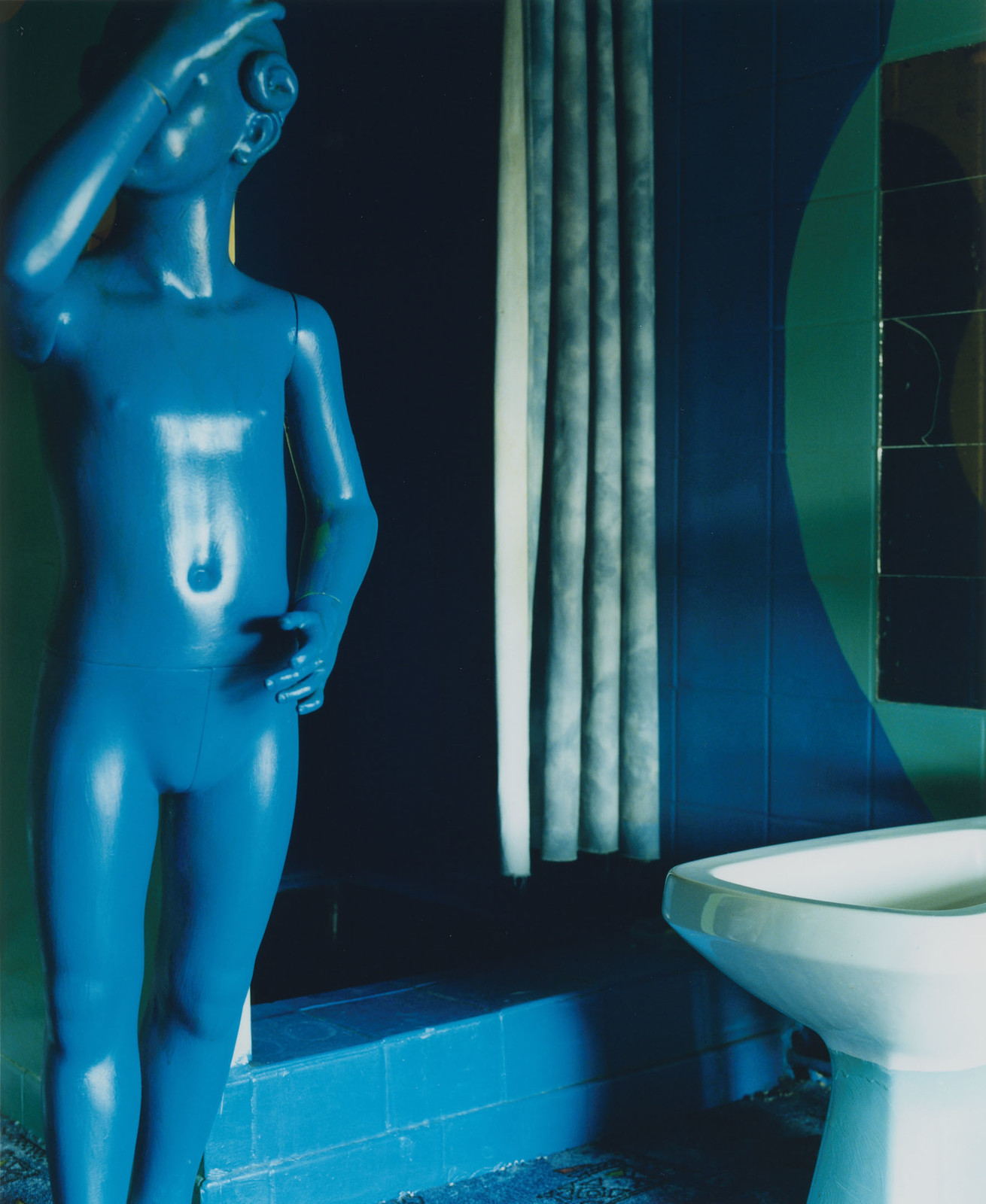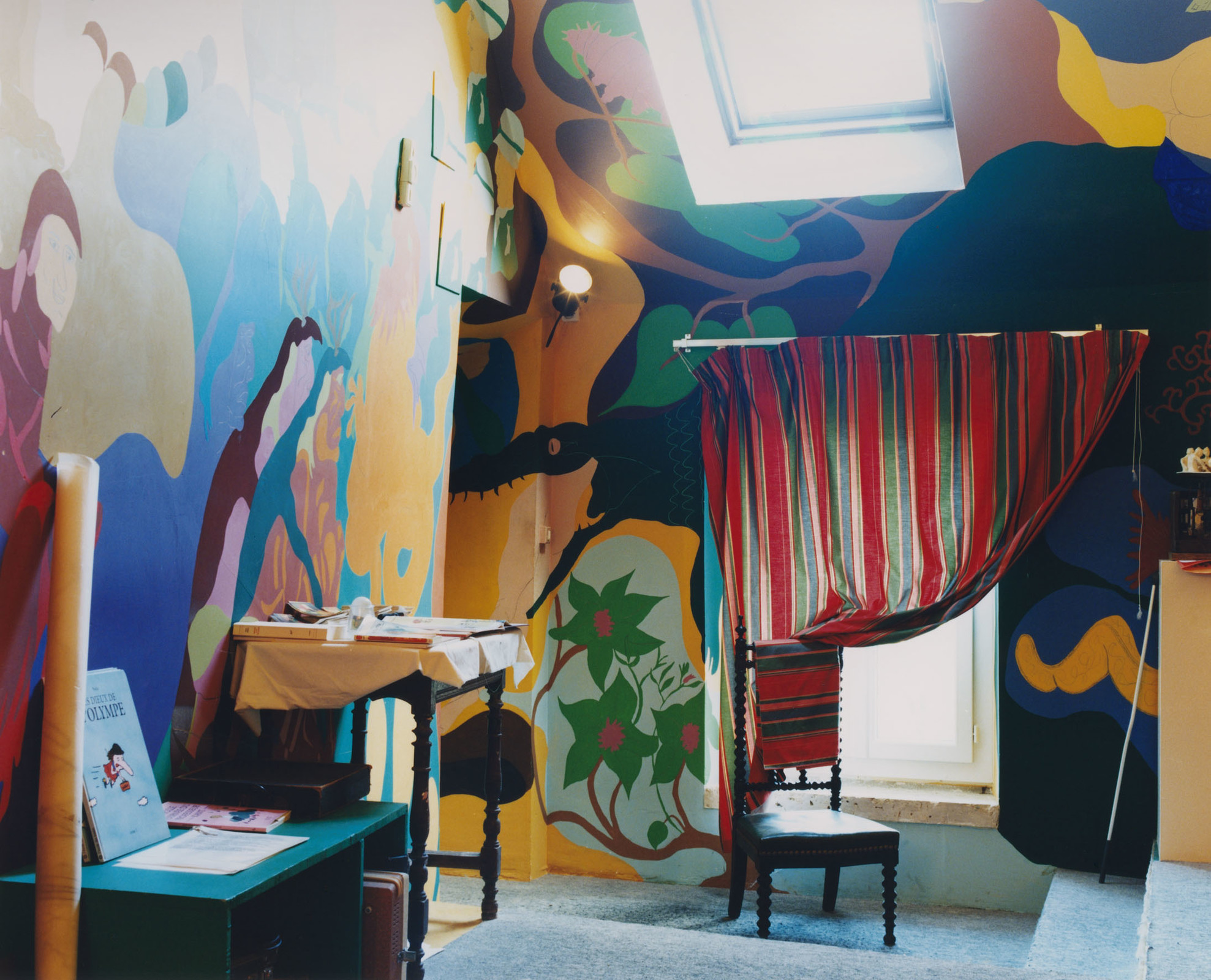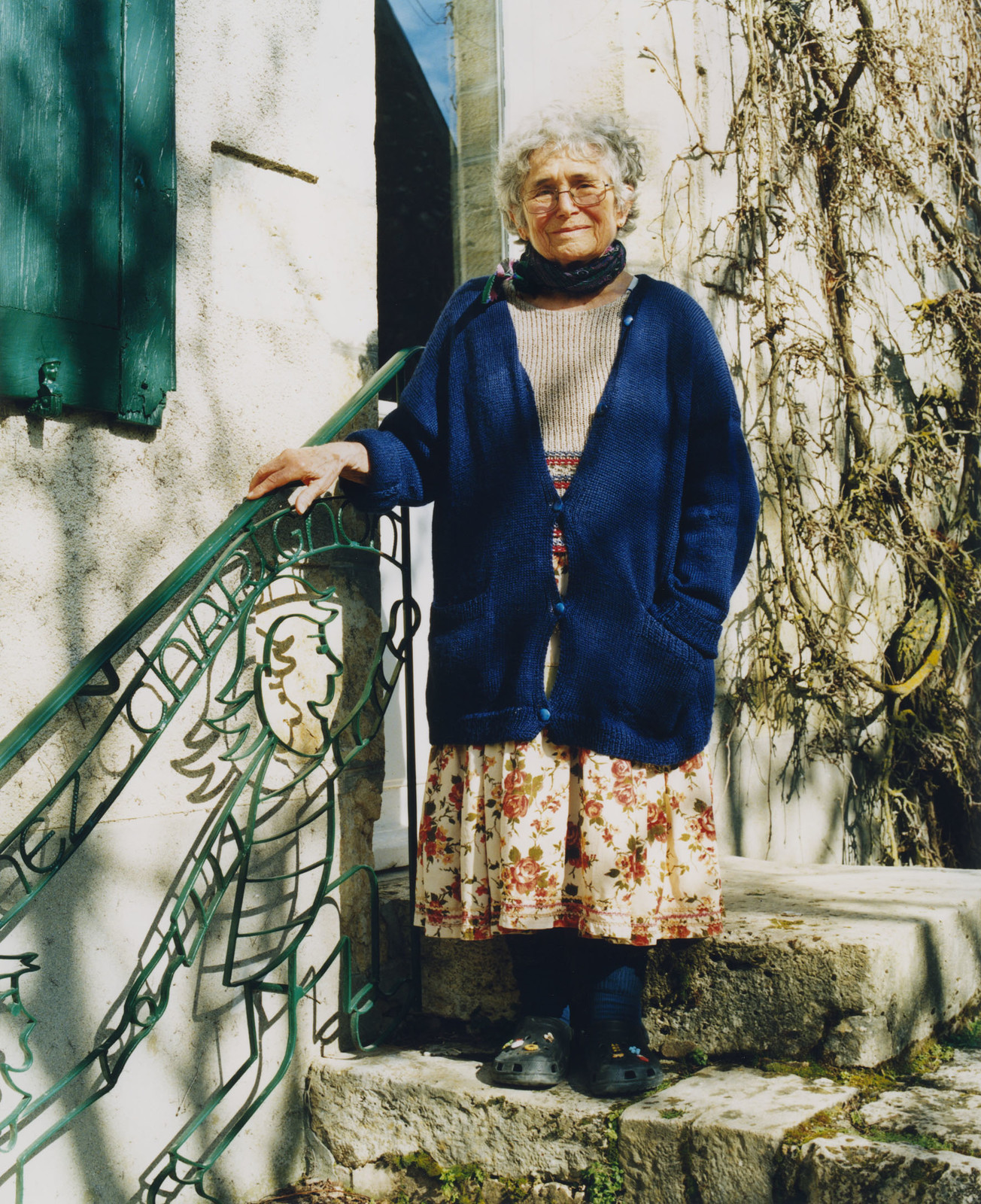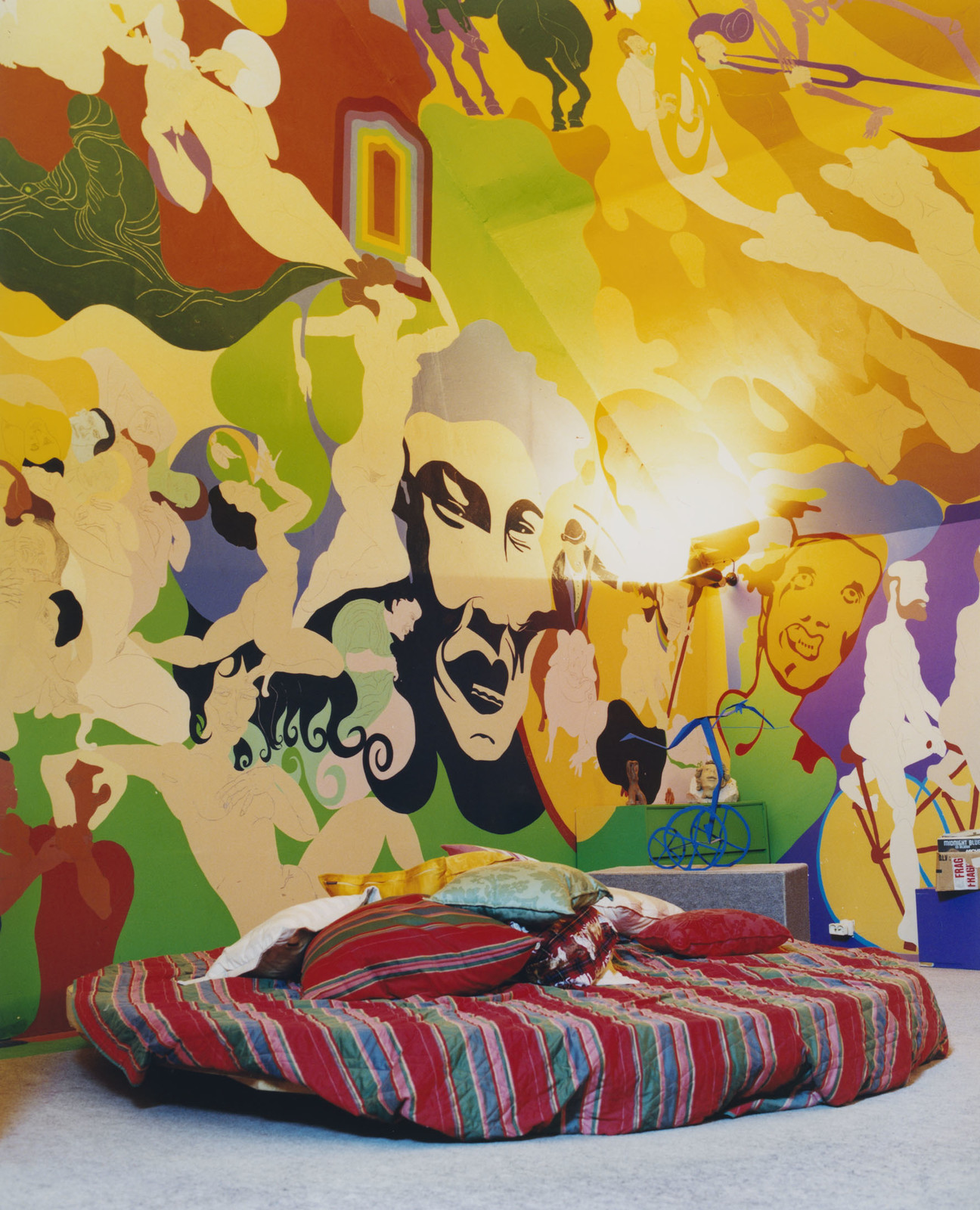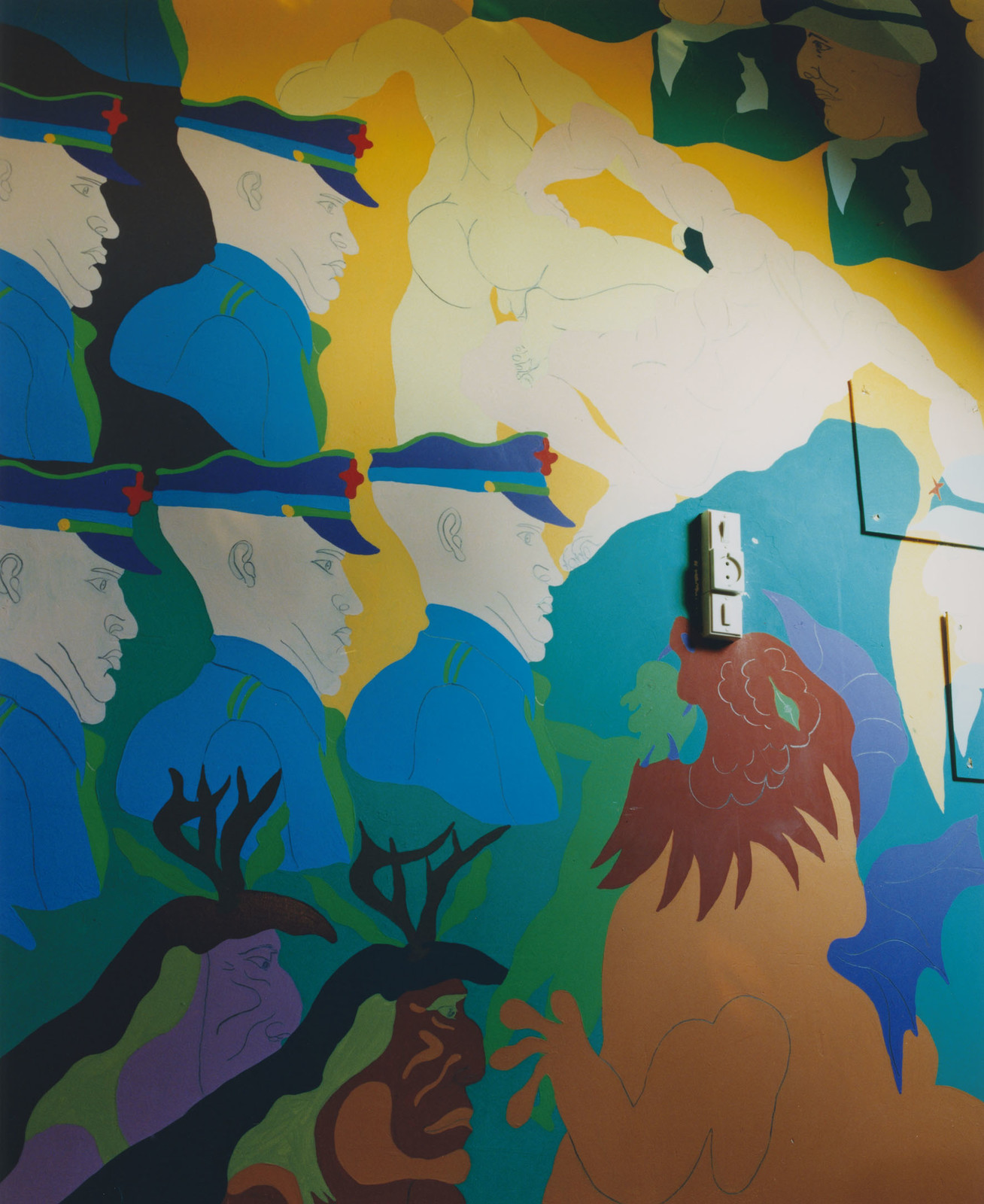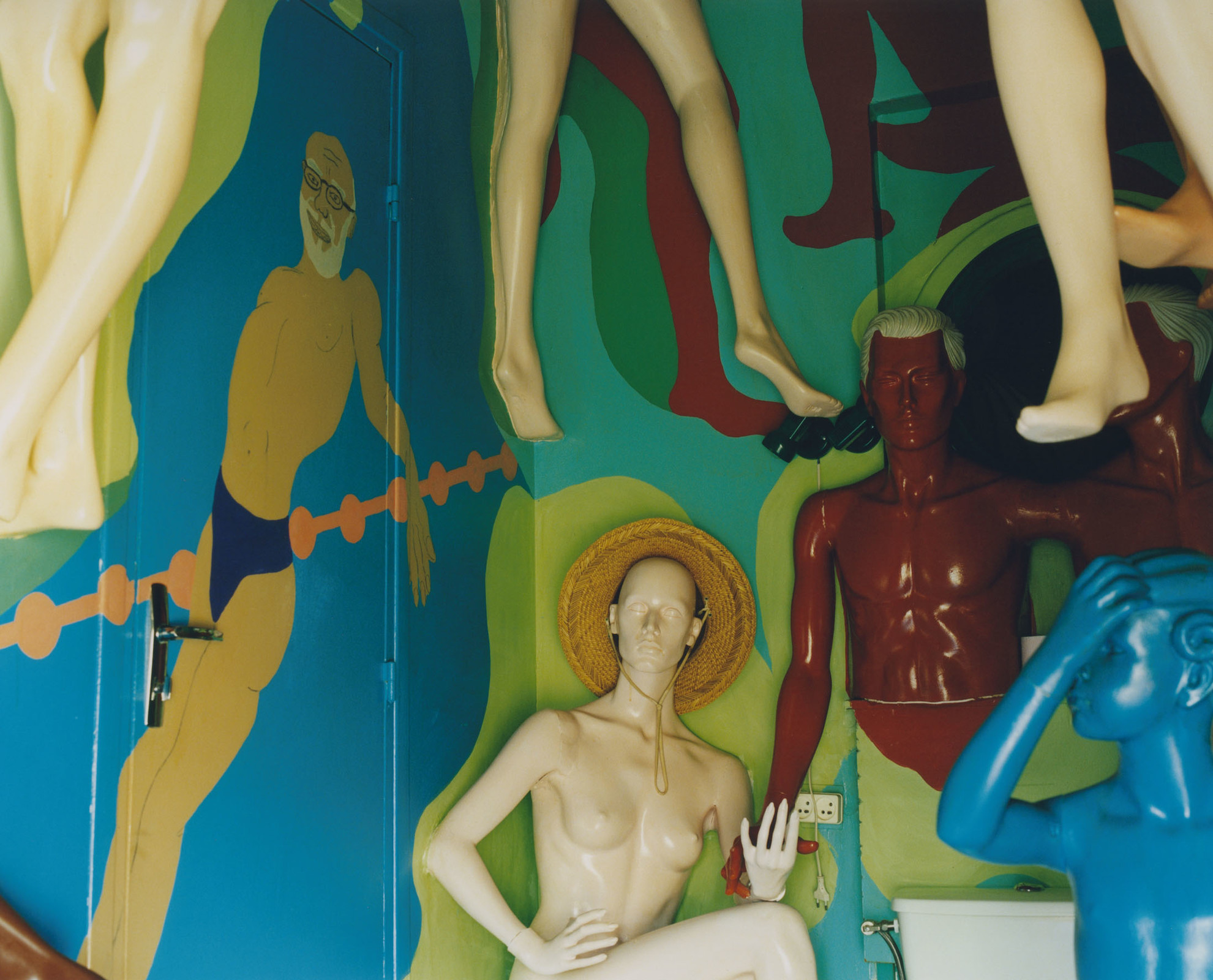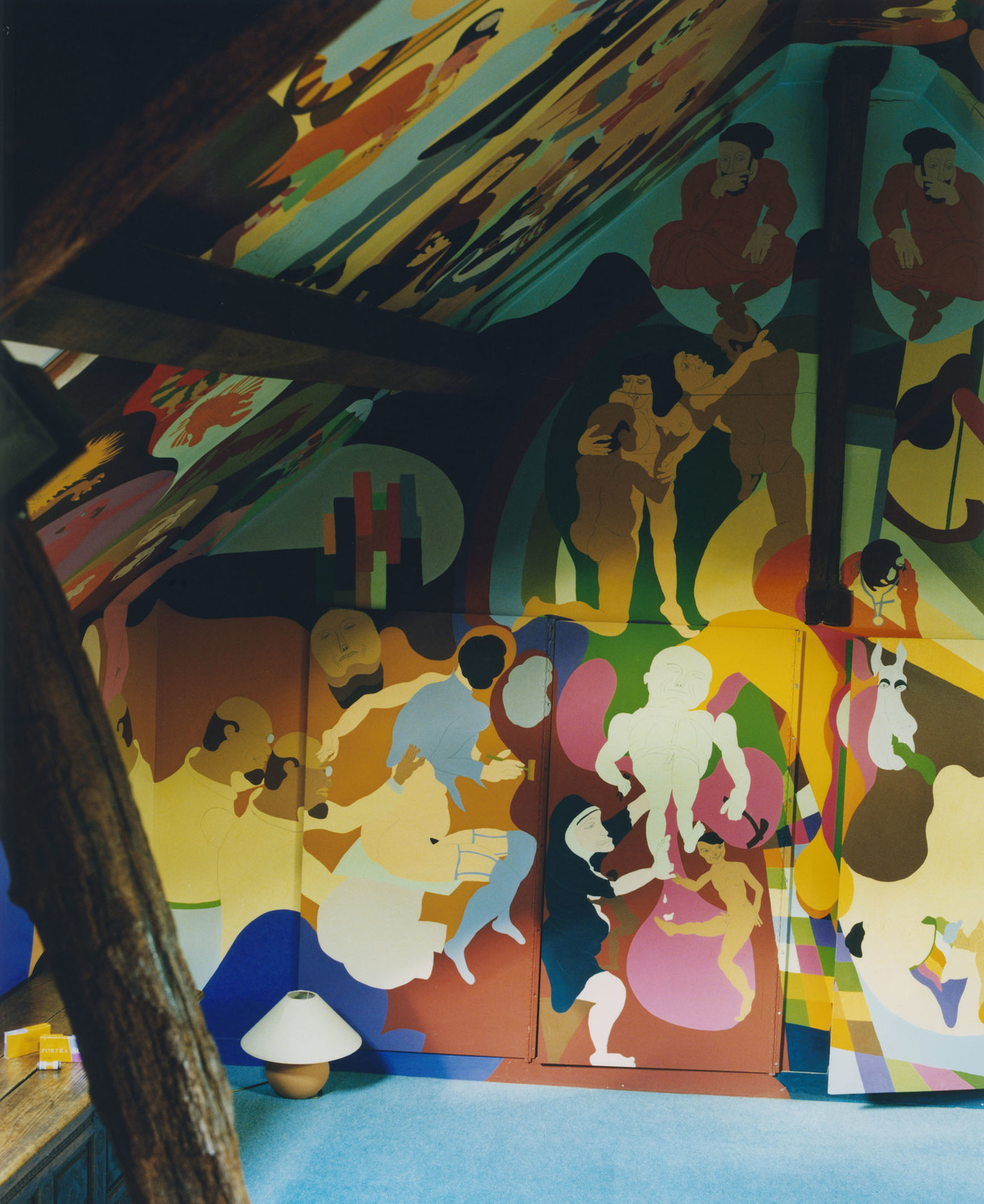I documented Bernadette Després and Denis Charignon painted house. Below an extract of the article I wrote about it published in #26 issue of Apartamento Magazine.
“It’d been five years already that I’d wanted to go to the house of Denis Charignon, after ambling around one of the websites on art brut/singulier that I regularly consult. I’d come across some photos of his house and was struck by the force of the frescoes, both naïve and controlled, which adorned the interior walls. The shapes and colours fit together without hesitation, covering surfaces, radiators, furniture, and doors. The painted rooms brought to mind the inside of a stomach, or a head, something organic that seemed to be alive. Denis’ style was like nothing I’d ever seen, something totally original and unique. Ploughing on with my research, I was able to discover very little, apart from the fact that Denis Charignon’s house was located in Givraines, in the Loiret department of France, that he’d decorated the walls with multicoloured frescoes, and that his wife was none other than Bernadette Després, the illustrator who became famous for her comics Tom-Tom et Nana. As with many other projects, I put this one aside for another day. Five years went by, and having decided to get in touch with Denis Charignon, I found out that he’d died in 2017, leaving behind his wife, children, and grandchildren, as well as a house that’s filled with his story. I contacted Bernadette, who immediately responded. I felt a desire to share this project, and so we set up a meeting.
In Givraines, February 2020, the countryside is frosty, the landscape flat and silent. On the tiny square of an agricultural village, there are a few parked cars but not a soul to be seen. At the corner of the main road there’s a large farmhouse. I push open the metal gate and make my way up the steps to the front door where I’m greeted by Bernadette Després, a small, smiling figure, wrapped in several woollen layers and a flowery dress, a pair of Crocs with tiny coloured pearls on her feet. Her cheerful, high-pitched voice invites us into the house, the same house where she lived with her husband and their four children, Étienne, Thomas, Pierre, and Lucile, and the house that he gradually covered from floor to ceiling with his frescoes. Bernadette leads us into the kitchen and we take a seat while a pot of sauerkraut simmers on the stove, the lunch she’s prepared for us with her daughter and granddaughter. There are no frescoes in this room, which has been recently renovated, but hanging on the wall is a painting of Denis. After a drink and a brief introduction, Bernadette guides us upstairs. A broken light bulb leaves us in the dark and I keep an eye on the walls, waiting for a painted surface, a shape, to jump out. The first door opens and reveals a room with tracing paper covered in drawings scattered all over the floor, the yellow light from the bulb distorting the colours of the frescoes we find there. The small space recounts one of Denis Charignon’s dreams, shown to us by Bernadette, a gloriously depicted horseback escape, traversing a dense forest, the birds of ill omen fleeing at ominous speed, suggesting a man as complex as his work. ” (…)
